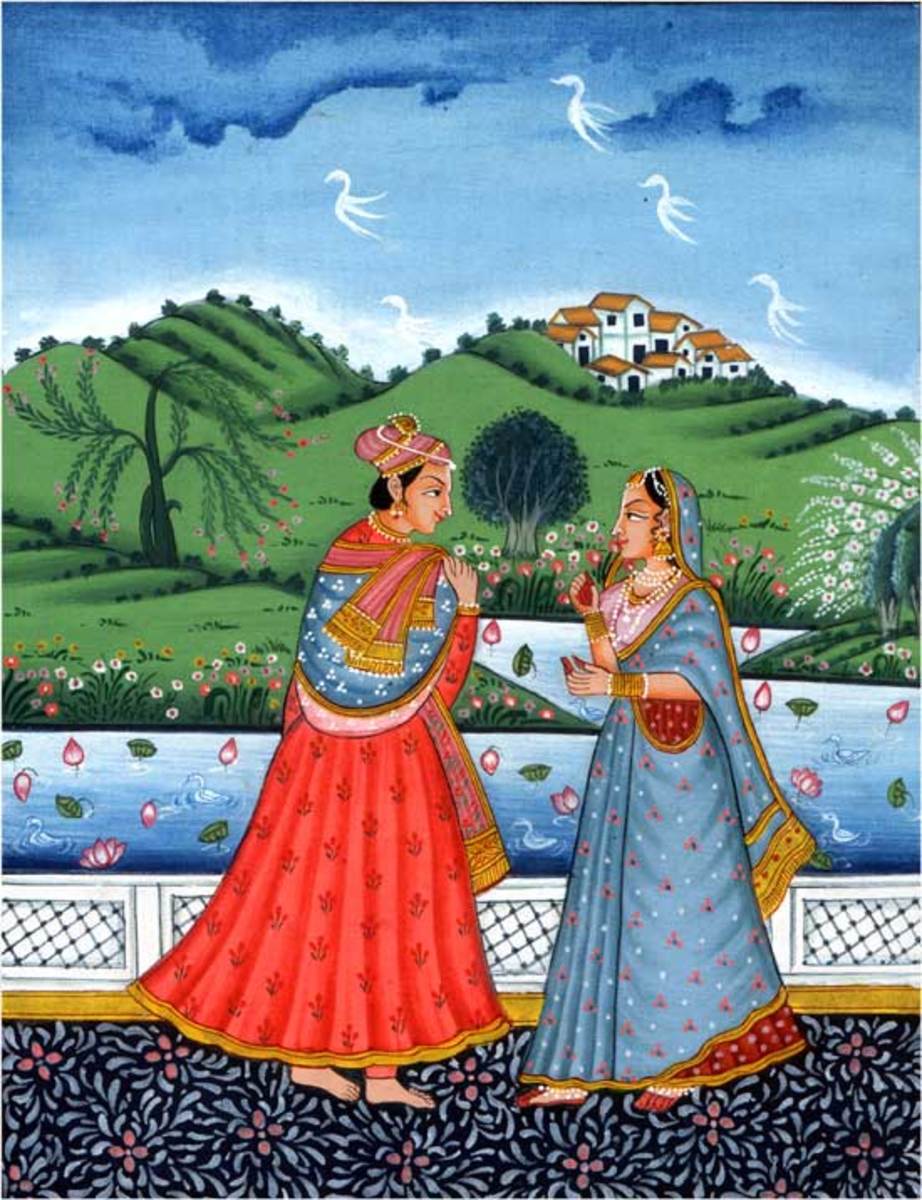Introduction:
Nestled in the scenic hills of the Himalayas, the Pahari region in northern India gave birth to a unique art form known as Pahari miniature paintings. These exquisite artworks, dating back to the 17th and 18th centuries, capture the spiritual essence, natural beauty, and cultural heritage of the Himalayan foothills. Join us as we embark on a journey to explore the ethereal beauty of Pahari miniature paintings and delve into the artistic legacy of this enchanting region.

Origins and Influences:
Pahari miniature paintings emerged under the patronage of the Rajput rulers who ruled over the princely states of the Pahari region, which includes present-day Himachal Pradesh and parts of Jammu and Kashmir. Influenced by the Mughal and Rajasthani art forms, Pahari miniatures developed their unique style, blending delicate brushwork, vibrant colors, and intricate details with a touch of ethereal spirituality.

Characteristics and Techniques:
Pahari miniature paintings are known for their delicacy, refinement, and lyrical beauty. These small-scale artworks were primarily executed on paper using natural pigments and dyes derived from minerals, plants, and precious stones. The artists employed intricate brushwork and fine detailing to create intricate patterns, flowing lines, and lifelike representations.
The Pahari artists used a technique known as “Wasli” to prepare the painting surface, which involved applying a layer of adhesive material made from powdered seashells to the paper. This technique enhanced the colors and increased the longevity of the artwork. Gold and silver leaf were also used to add a touch of opulence and divinity.

Themes and Subject Matter:
Pahari miniature paintings explored a wide range of themes, reflecting the cultural, mythological, and spiritual ethos of the Himalayan region. The artworks often depicted scenes from Hindu epics like the Ramayana and Mahabharata, along with stories of Krishna and Radha, the divine lovers. The artists skillfully captured the divine romance, longing, and devotion through their delicate brushstrokes and subtle expressions.
Nature and landscapes were another recurring theme in Pahari miniatures, showcasing the awe-inspiring beauty of the Himalayan foothills. The paintings depicted lush forests, flowing rivers, majestic mountains, and blooming flowers, evoking a sense of tranquility and harmony with the natural world.

Noteworthy Schools and Artists:
Pahari miniature paintings gave rise to several notable schools, each with its distinct style and aesthetic. The Basohli school, characterized by bold colors, strong lines, and dramatic expressions, was one of the earliest and most influential schools of Pahari art. The Kangra school, known for its refinement, delicate detailing, and lyrical compositions, reached its peak during the 18th century under the patronage of Raja Sansar Chand.
Prominent artists like Nainsukh, Manaku, and his sons Guler and Raja Ravi Varma, played a crucial role in shaping the Pahari miniature tradition. Their masterpieces continue to inspire and captivate art enthusiasts and connoisseurs to this day.
Legacy and Influence:
Pahari miniature paintings left an indelible mark on the art landscape of India. Their delicate beauty, evocative storytelling, and spiritual undertones have influenced not only the regional art forms of the Pahari region but also the broader Indian art scene. The lyrical compositions and subtle expressions of Pahari miniatures resonate in contemporary Indian art, reflecting the enduring legacy of this exquisite tradition.
Preservation and Appreciation:
Efforts are being made to preserve and promote Pahari miniature paintings. Museums, art galleries, and cultural institutions house collections that showcase the rich heritage of Pahari art. Various initiatives, including exhibitions, workshops, and research programs, aim to raise awareness and appreciation for these masterpieces, ensuring their legacy continues to shine bright.
Conclusion:
Pahari miniature paintings offer a glimpse into the sublime beauty and spiritual fervor of India’s Himalayan region. With their delicate brushwork, vibrant colors, and evocative narratives, these artworks transport us to a world of divine romance, natural splendor, and cultural heritage. As we marvel at the ethereal beauty of Pahari miniatures, we honor the artistic legacy of the Pahari region and celebrate its contribution to the vibrant tapestry of Indian art.
